Nice, France
Collectors Dialogue
George Cramer
February 14, 2021

No stranger to most watch aficionados, George Cramer is well known within watch circles for his expertise on Cartier, contributions to a multitude of watch publications, as well as the excellent work showcased in his book “Cartier – The Gentlemen’s Files”. In this feature, we follow George on his journey into the fascinating world of Cartier timepieces.

George’s custom order Cartier Tank Cintree with stylized red arabic numerals. Photo courtesy: George Cramer
Tracing to decades back, George had been deeply attracted to the timeless creations from Cartier, and was particularly fascinated with the linear and squarish forms that were favoured by the Maison. He attributes his partiality towards the house that is often lauded for its pursuit in the creation of beautiful timepieces and objects to his background in the arts, which traces back to his time during Art School and the following years that saw him designing covers for gramophone records of classical music. Naturally, his first watch of choice was from Cartier – the wildly popular Santos de Cartier. This reference was released in the late 1970s as a gorgeous two-tone steel and yellow gold model, featuring a distinct square dial and bezel with its signature screw motif that extends to the riveted steel bracelet. The popularity of the redesigned Santos de Cartier grew rapidly and by the 1980s, had risen through the ranks to become one of the most sought-after watches in the world. George, like countless others, was captivated by it.
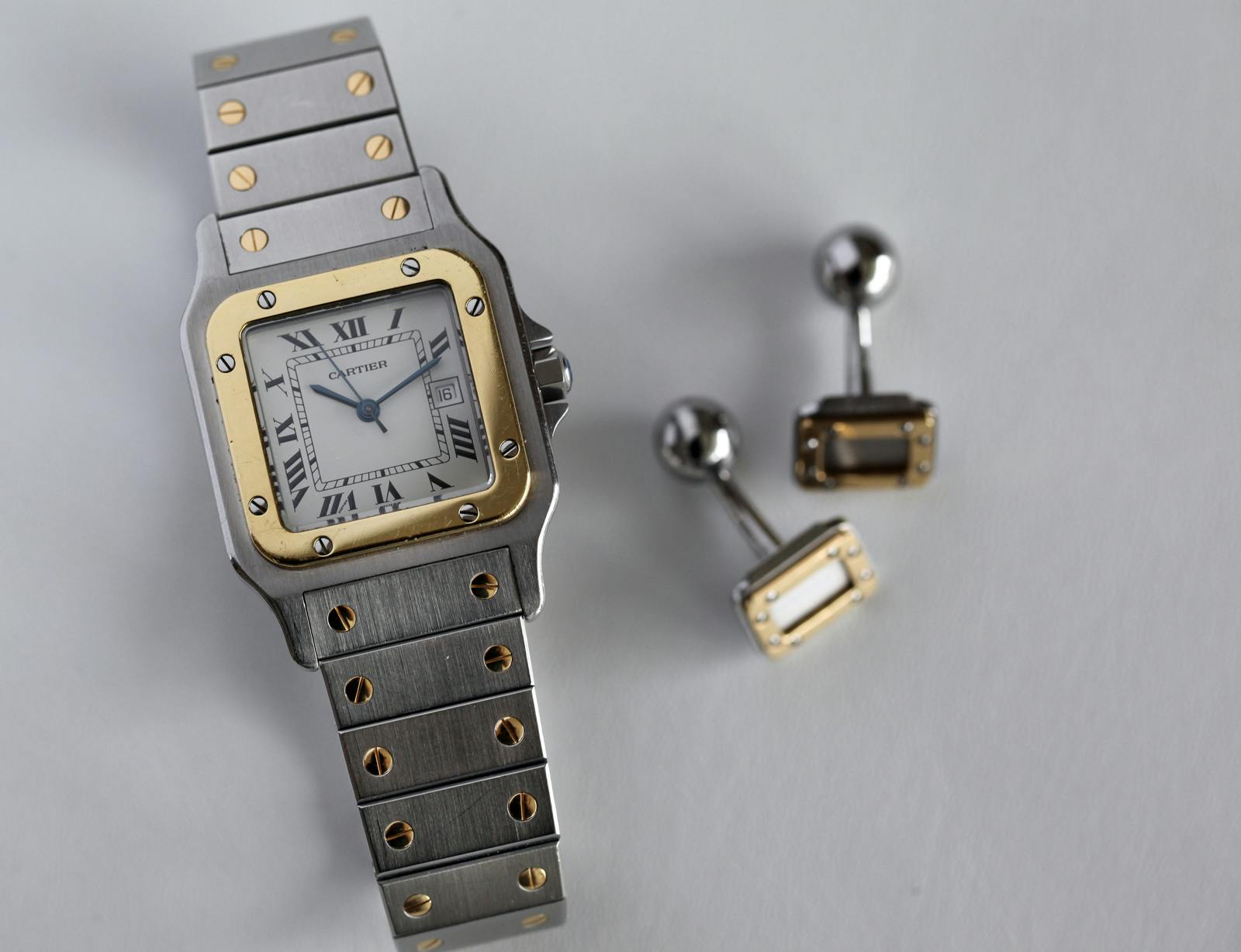
George’s Personal Santos de Cartier. Photo courtesy: George Cramer
This acquisition signified the start of his Cartier collection which eventually grew with the addition of the Pasha de Cartier shortly after in 1987. The hunt for the Pasha proved to be complex and lengthy and required more than a little luck to chance upon one, as it was a different time then and the Maison’s production was on a much smaller scale. It was not easy to come across it, much less in one’s desired combination. By a stroke of luck, George stumbled upon his Pasha in a Cartier boutique in Zurich, which unfortunately did not offer the gold Figaro bracelet – it was no longer available in Europe by then. It was quite some time after when the search for the elusive Pasha Figaro bracelet eventually led him to a Cartier boutique in Miami where he finally procured the piece, thus ending the pursuit which was at times frustrating and yet, for the most part, exhilarating.
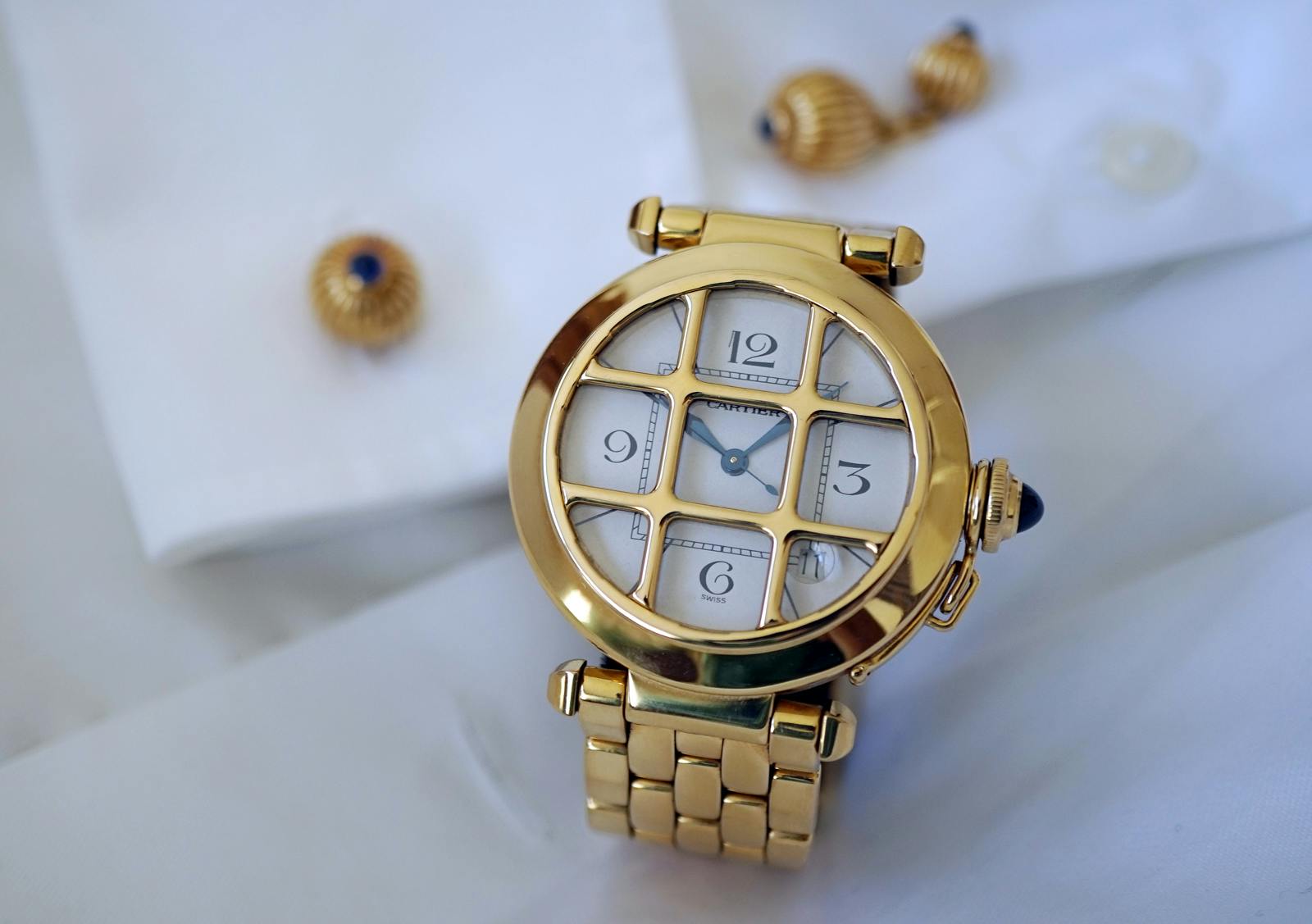
Pasha de Cartier with Figaro bracelet. Photo courtesy: George Cramer
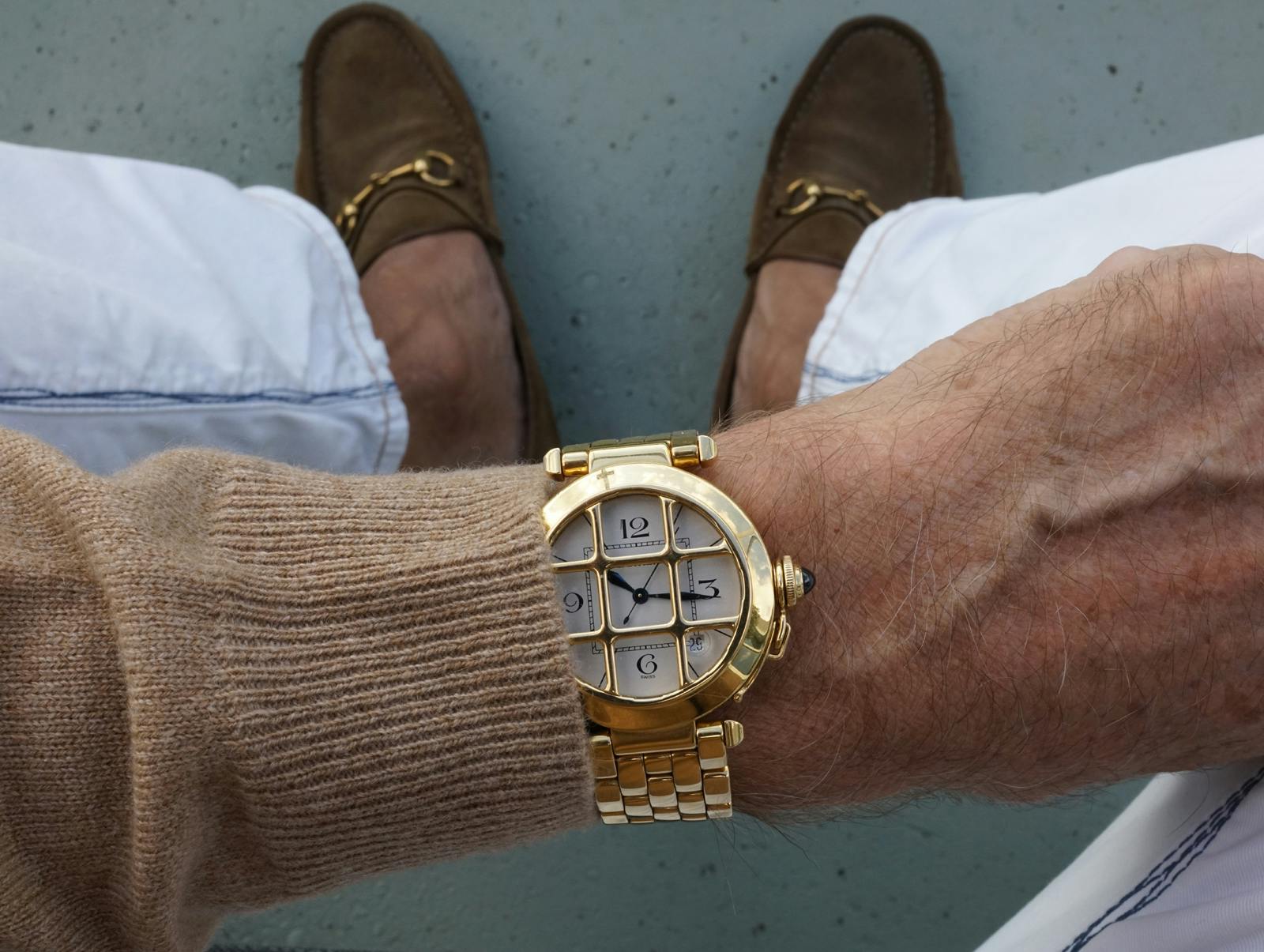
George’s personal Pasha de Cartier with Figaro bracelet. Photo courtesy: George Cramer
The enchantment with Cartier had George following them closely for years. Gradually, he accumulated a wealth of knowledge about the house which he shares and exchanges generously with other fellow Cartier enthusiasts on the Cartier Forum at Timezone. His deep expertise on Cartier did not go unnoticed within the watch circle as years on, a call from Ian Skeller (currently at Quill & Pad) and Jack Forster (currently at Hodinkee US) saw him joining Revolution’s new Cartier forum as the Moderator where he helmed the role for years until the forum was reborn as blog. Meanwhile, the Revolution Magazine was launched in 2005, and he was presented with a great opportunity to publish articles centering on Cartier for both the blog and the magazine.
These happenings came at the time when Cartier was focusing on the “Collection Privée Cartier Paris” (CPCP), a fine collection dedicated to the commemoration of their remarkable historic designs dating back to the 1900s. George has written extensively on CPCP and the changes which Cartier had undergone during the past decades in his book “Cartier – The Gentleman’s Files” and on numerous other platforms, both great gateways for developing a deeper understanding of his journey with them.

1998 Cartier Santos Dumont CPCP in platinum & 2005 Cartier Santos Dumont CPCP in yellow gold. Photo courtesy: George Cramer

1998 Cartier Tank Obus CPCP. Photo courtesy: George Cramer
All CPCP models were produced in extremely small quantities and were even often released in an extremely limited run of just 100 pieces.
CPCP was introduced at the SIHH in 1998 and featured timepieces that were mainly designed for men, who by then were more knowledgeable about their watches and were increasingly keen on procuring timepieces with excellent mechanical movements. The series of watches released under CPCP were exceptionally built, and were fitted with calibers from manufactures such as Jaeger-LeCoultre, Piaget, Renaud & Papi, and Frédéric Piguet. As always with Cartier, the visual aesthetics of the timepieces was a strong focal point in this collection. The series featured several of Cartier’s iconic historical case designs, for instance, the Tonneau, Tank Asymétrique, and the Cloche. These cases were mostly slightly modified in size to suit the contemporary preference which gravitated towards larger cases. Much care was paid to incorporate historical details like the rosette motif around the hands which appeared in the 1920s Cartier timepieces, and the magic word “PARIS” below the “CARTIER” signature that was commonly included during the early years. These features became synonymous with the CPCP collection and were often mentioned by collectors of whom several appreciated Cartier’s subtle tribute towards its own heritage. All CPCP models were produced in extremely small quantities and were even often released in an extremely limited run of just 100 pieces.
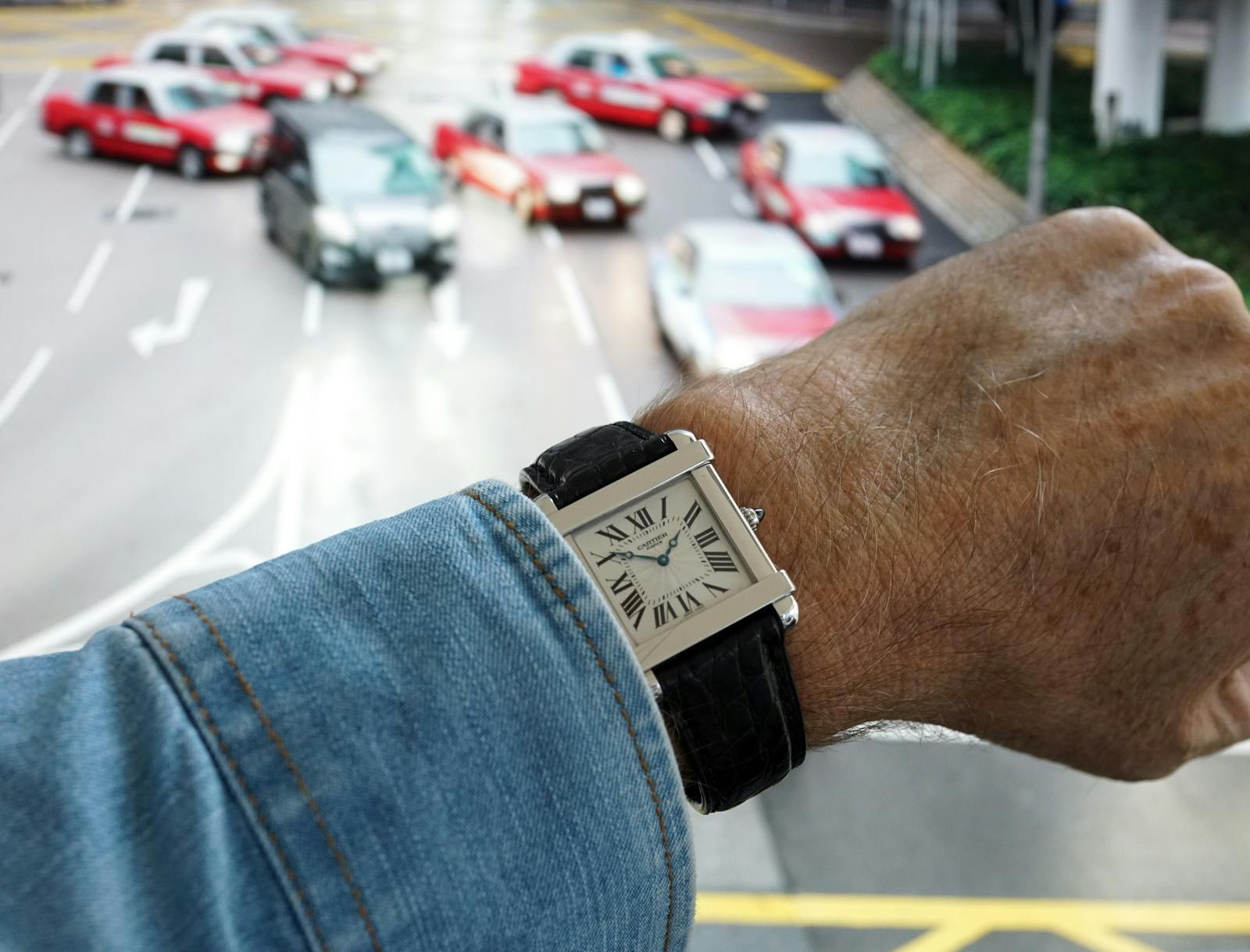
2004 Cartier Tank Chinoise CPCP. Photo courtesy: George Cramer

2006 Cartier Tank Asymétrique CPCP. Photo courtesy: George Cramer
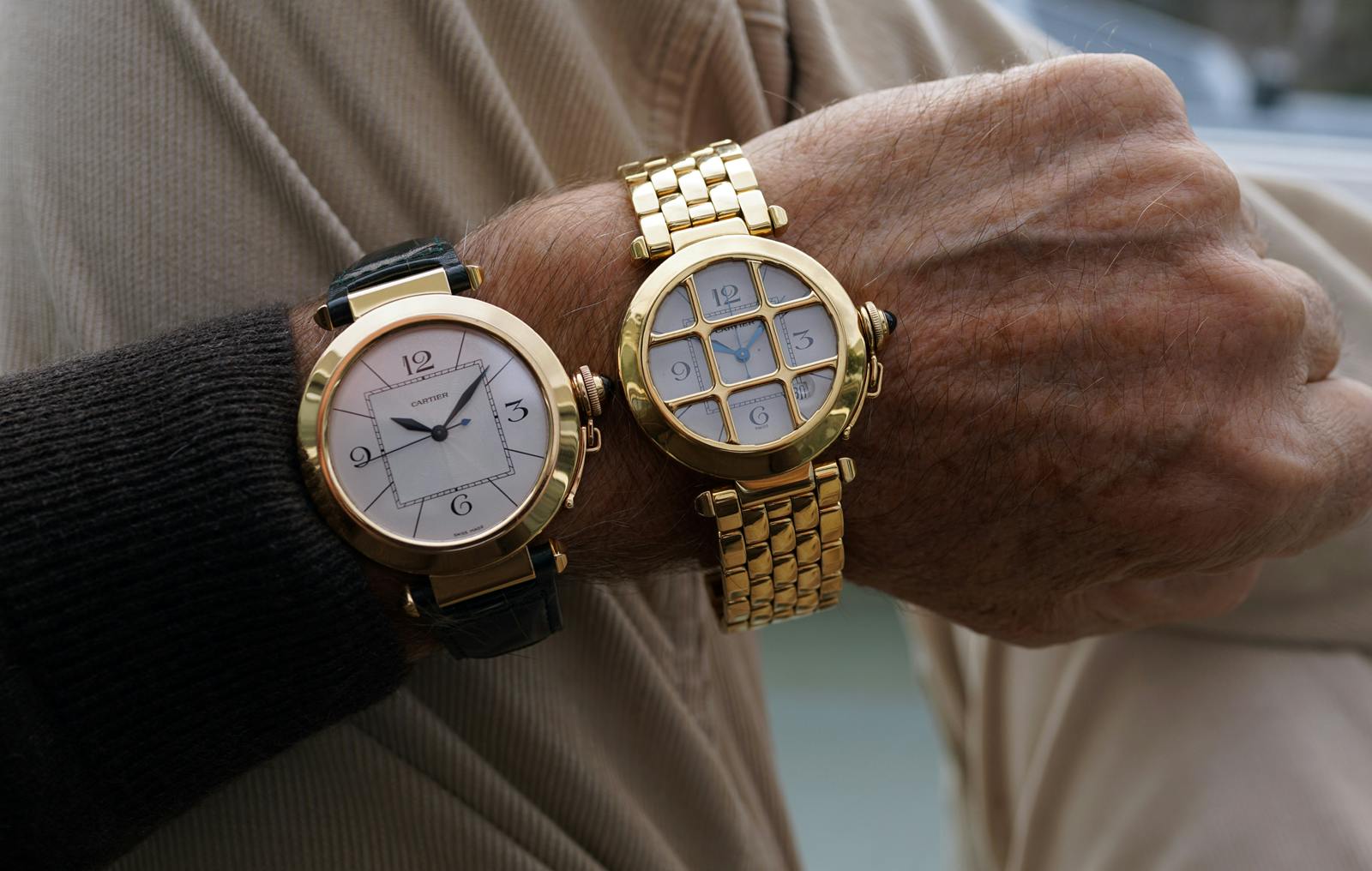
2005 Pasha de Cartier in 42mm alongside the 1987 Pasha de Cartier in 38mm. Photo courtesy: George Cramer
Previously a brand that focused mostly on females, Cartier now devoted itself to the men’s market not only through the men’s timepieces that were being quickly developed but also by means of extensive advertisement and ramped up public relations.
As the year came to a close in 2007, a large 47mm Ballon Bleu Flying Tourbillon appeared on the market with much fanfare, marking the introduction of Cartier’s “Fine Watch Making Collection” that was officially presented to the world in a grand ceremony in 2008. It was also during 2008 that Cartier quietly discontinued CPCP and ended its decade-long run. Cartier was now focusing its resources on the new collection that was led by its CEO Bernard Fornas, with its watch division helmed by Carole Forestier-Kasapi and housed in its own manufacture in La Chaux-de-Fonds. Till then, George had been following Cartier closely and was impressed with the way which Cartier was handling its new direction. It had a team of extremely talented watch makers headed by Carole Forestier-Kasapi who George, along with countless others in the watch industry, dubbed as the Queen of Complications. Moreover for the first time ever, Cartier embraced an open approach and was actively updating approximately 100 journalists from all over the world about its developments through presentations, and disseminated information about the absolute dream machines that the manufacture had crafted. Cartier’s priority had also shifted under this new direction. Previously a brand that focused mostly on females, Cartier now devoted itself to the men’s market not only through the men’s timepieces that were being quickly developed but also by means of extensive advertisement and ramped up public relations.
This was an exciting time for Cartier. However, as George noted, this was also the beginning of the period when large watches were getting increasingly popular. In anticipation of greater demand for huge timepieces, Cartier prepared and launched several of its incredibly complicated references in an oversized case. The “Fine Watch Making Collection” produced numerous complicated timepieces of extraordinary make and quality – among which were tourbillons, minute repeaters and perpetual calendars. Unfortunately, a multitude of factors contributed to the lukewarm response that the line received and the “Fine Watch Making Collection” ultimately concluded its run in 2018.

2010 Cartier Santos Dumont Squelette. Photo courtesy: George Cramer
The decision to end the “Fine Watch Making Collection” followed the arrival of Cartier’s new CEO, Cyrille Vigneron, who took over the reins and reinvigorated Cartier by changing its direction drastically. Cyrille Vigneron had previously spent several years at Cartier Tokyo and had cultivated a deep understanding of the brand. He believed that Cartier’s designs can be beautiful, classic and understated, and his take was evident in the current collections – smaller cases that were more wearable and more feminine, with a strong focus on high jewelry.
To George, Cartier’s deliberate move to bring back the elegance of past models with slight updates in the aesthetic that align with the contemporary preference signals a promising future.
Although it has been more than a decade since the world last saw CPCP, the impression the legendary collection left never truly faded. Under the direction of Cyrille Vigneron, Cartier revived CPCP by introducing the Cartier Privé collection which includes reinterpretations of great classics such as the Tonneau and Tank Cintrée. The new series adopted certain attributes of CPCP – the platinum cases set with a ruby in the crown, the concept of limited editions that creates exclusivity, among others. However, Cartier Privé differentiates itself from the CPCP line by featuring a more contemporary, minimal look and most importantly, by using the Maison’s in-house calibers. To George, Cartier’s deliberate move to bring back the elegance of past models with slight updates in the aesthetic that align with the contemporary preference signals a promising future.
Apart from their contemporary timepieces, Cartier’s vintage watches have always been greatly admired by many watch collectors for their exquisite, unique and yet timeless beauty. The rarity of the vintage timepieces contributes to the demand as well, as evidenced by the high prices and speed at which they disappear from the market. Yet as with many vintage timepieces, George is well aware that a collector has to have deep knowledge and a discerning eye for them, and that they often require a degree of restoration and careful servicing. Moreover, as he strongly believes, they tend to be more fragile than their new counterparts. These factors collectively nudged him away from vintage timepieces and pulled him towards CPCP and Cartier Privé which boast models with excellent movements housed in classic, timeless cases. To him, CPCP and Cartier Privé are the reasons why he finds Cartier interesting, and why he remains invested in Cartier’s journey.

2006 Cartier Tonneau XL CPCP. Photo courtesy: George Cramer

2007 Cartier Cloche CPCP. Photo courtesy: George Cramer
In George’s observation of Cartier’s rises and falls over the years, he was particularly intrigued with the Maison’s new focus on the men’s market in the 2010s. It caused a stirring in him, which led to the conception of “Cartier – The Gentlemen’s Files”, a large coffee table book focusing on Cartier’s men’s watches. He saw a niche that he could fill as even though Cartier’s men’s watches were being actively discussed and much appreciated among watch collectors and aficionados, there was no book yet that focuses solely on this subject. This was in 2012. He understood it was essential to select the right time period to cover – not too long, not too short and yet sufficiently broad.
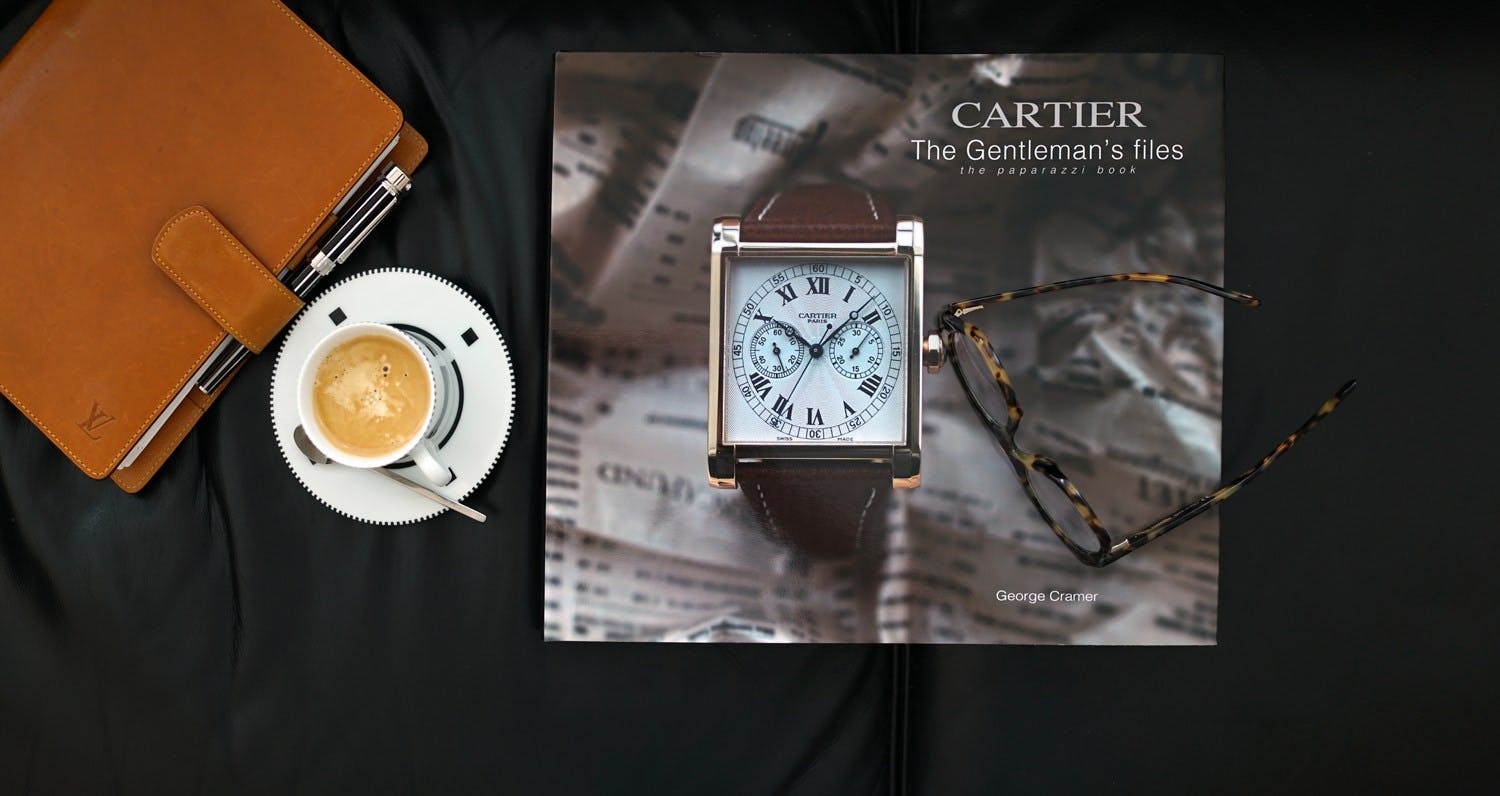
“Cartier – The Gentlemen’s Files” released in 2019. Photo courtesy: George Cramer
He poured his heart and countless hours into the book for 7 years before it was finally available for online ordering in early 2019.
After much careful consideration, he settled on the era of CPCP and the Fine Watch Making Collection, supplemented with a few notable models from the earlier years and ending with Cartier’s current direction. There are plenty of publications on Cartier – its rich history, the various important royals and movies stars who were adorned in phenomenal pieces from the famous house, all of which have been covered comprehensively. This led to his eventual decision to exclude these details from his book. Instead “Cartier – The Gentlemen’s Files” was a book for one who was solely looking for information and details of Cartier’s men’s watches. Several images in “Cartier – The Gentlemen’s Files” were in fact shot on location at Cartier presentations, exhibitions, or at the various homes of friends and other collectors. He poured his heart and countless hours into the book for 7 years before it was finally available for online ordering in early 2019.
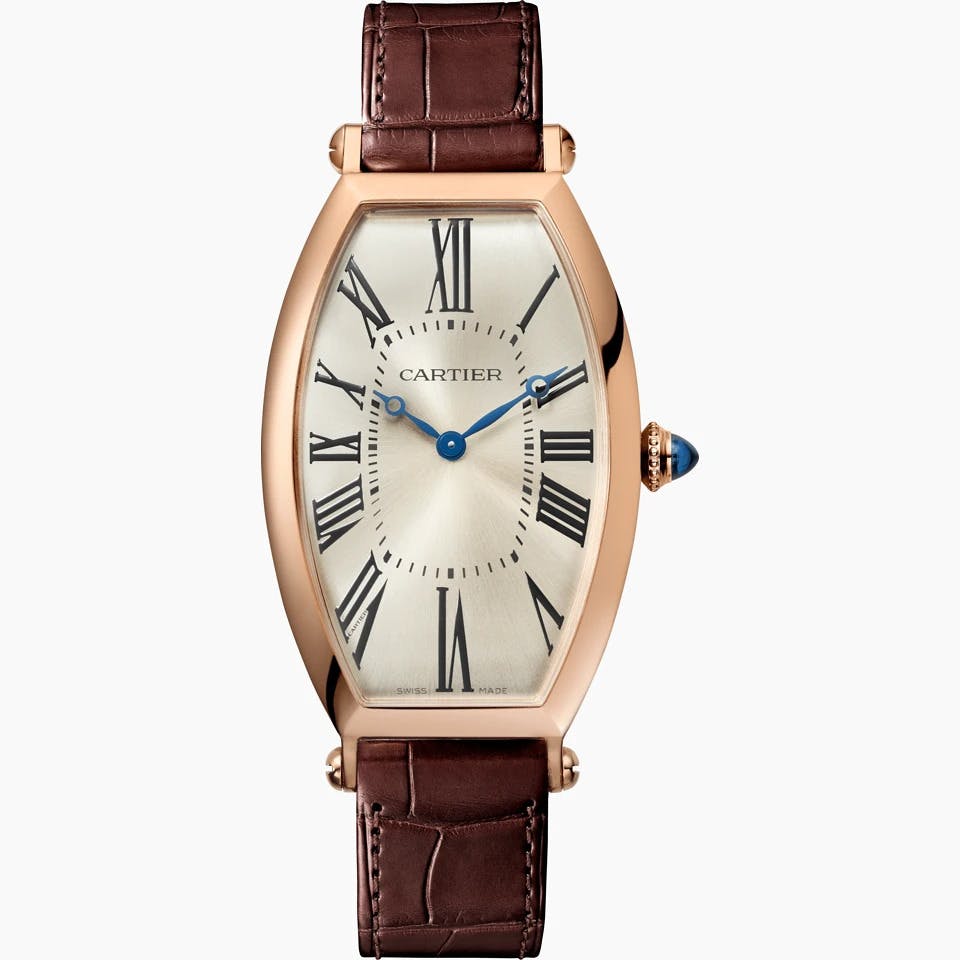
Cartier Privé Tonneau Watch. Photo courtesy: Cartier
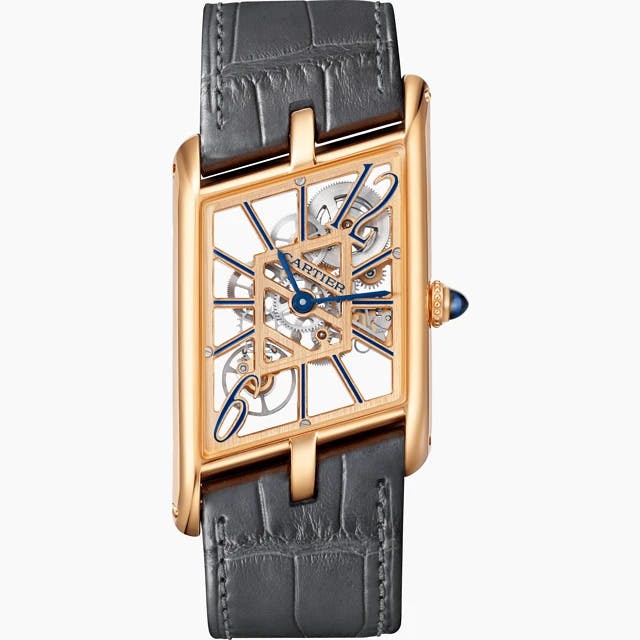
Cartier Privé Tank Asymétrique Watch. Photo courtesy: Cartier
To date, Cartier has released several beautiful watches under its Cartier Privé collection, including the stunning 2020 Cartier Privé Tank Asymétrique. As we welcome a new decade in 2021, a special remake of the Tank Cintrée was revealed as Cartier celebrates its 100th Anniversary of the Tank Cintrée. Having seen (and been floored by) this limited centenary edition Cartier Tank Cintrée 100th Anniversary (ref. WGTA0057), we hold our collective breath with George in anticipation of what the Maison has to offer.

100th Anniversary Cartier Tank Cintrée Limited Edition. Photo courtesy: Andy Kyaw (@andykyaw)